
Sep 8, 2023
Kerbal Space Program 2 - mikey
Attention Kerbonauts!
ICYMI, a few weeks ago we sat down with Senior Mechanical Concept Designer Chris Adderley for an Ask Me Anything. Thank you all for your questions and for tuning in! A reminder that we are in Early Access and plans can change.
Check it out here on YouTube. Chris answered more of your questions below, read the full questions and answers here!
[h5]Alexoff[/h5]
What percentage of the parts in KSP2 were created by you personally?
Are there any more concepts for more air-breathing engines like the J-90 (smaller or larger)?
How will the sizes of different stars be scaled with respect to Kerbol? Will they be scaled at 1/3 of their real-life analogs like Kerbol and the Sun?
I'm sure you've been deep in colony part design. What are your thoughts on greenhouse and simple life support with snacks, for example? How do you see conveying that colonies are both real places where Kerbals live and 'working machines' like the way vessels are?
Has the concept of heating changed at any point based on feedback?
These are the best questions because they’re the hard ones. Often we trend towards supporting a player path that doesn’t reward excessive timewarping, but doesn’t exclude it either. A good case study is resource extraction and deposit concentrations. There’s definitely fun in seeking out and finding the best deposit for mining. Obviously though timewarp makes that kinda moot in timing. You could just start mining a hypothetically low-grade deposit and warp for 50 days. That tells us that time and rate -based mechanics need to have more to work well. A specific example here is that a newly accessible resource should be constrained differently – challenging location, resource transport limitations, etc.
We try to move the real player decisions to things that are interesting with and without time as a mechanic. Mostly hypothetical examples, but here’s a few ways of thinking of these things on top of my head:
[h5]Socraticat[/h5]
What are your favorite tips and tools for new modders?
Is there any consideration of 1.875m parts?
While we do know it won't be added in the short term, the team has previously been wishy-washy if radiation/life support will make it into the game. Are these topics something that the team has decided won't be in the game until maybe after 1.0, or something the team has a firm answer on what they want to do with but does not wish to disclose it (though if you do wish to disclose please do), or something that the team is genuinely undecided on?
Are there features you modded into KSP1 that you are bringing into KSP2? What is your favorite?
Are there any types of parts being added to KSP2 that as far as you know, weren't really available as mods in KSP1? Some unexpected bits and bobs, maybe?
Will all parts from your mods be implemented in KSP2, especially large solar panels, station parts, and MK4 spaceplane?
Will we get size variants for all parts? Example, hydrogen tank with the smallest radius only has a long option. Why were "semi-procedural" parts not considered, where you can select a tank and set its length and radius to some predefined available values?
How advanced will the Kerbal's technology be, will there be very advanced parts such as anti-particle devices?
Are you able to tell us something about Science and career modes? Delving deeper, what can we expect from Science mode? Is it the same 'click and reward' setup as KSP1 or is the team going for a 'Science over time' approach akin to Kerbalism?
Having done both, what are the main differences between adding a part/set of parts to the game as a modder versus a paid member of the team?
What steps are the development team taking to make KSP2 accessible and appealing to new players who may not have played the previous game or are new to the genre?
Can you give some more detail on the supply route system? Can you automate the construction of supply vessels, or does a vessel have to be built to assign an automated route to it? In other words, when the route is finished, does the vessel have to be intact?
What real life concepts/scientific work gave you the most headache? Is there something you're really proud of, that your creations will introduce to players?
So someone in the KSP2_general channel on Discord pointed out that the "brass line" vacuum engines in KSP2 have some resemblance to your previous modded content. How is the process like with implementing these similar designs to the game? Do you do it entirely yourself?
I do very little of those things. Effectively, I:
Keep up with all things Kerbal Space Program 🚀
KSP Forums
KSP Website
Facebook
Twitter
Instagram
Intercept Games Discord
KSP YouTube
ICYMI, a few weeks ago we sat down with Senior Mechanical Concept Designer Chris Adderley for an Ask Me Anything. Thank you all for your questions and for tuning in! A reminder that we are in Early Access and plans can change.
Check it out here on YouTube. Chris answered more of your questions below, read the full questions and answers here!
[h5]Alexoff[/h5]
What percentage of the parts in KSP2 were created by you personally?
- Depends on how you measure it. Effective zero because I don't do the asset work, by one definition. In terms of maybe inception/conception, in the EA release I'd say I had a hand in about 10%.
- The largest part I have in my list right now is in the 80m+ size category. It's a lot harder to measure colony parts versus vehicle parts though...
- I participate in the concepting and design phase, yes. It's where I'm focusing a lot of my 'thinking time' these days. Colony parts are both similar and different from vehicles - in what they look like, how they assemble, etc. As we get to those milestones, we refine our designs from player feedback.
- Most things in KSP2 end up being more complex than in KSP1. As an example at the basic level, the PBR shading model that we use requires more texture maps than KSP1. That is mitigated by having access to internal tooling and a faster iteration look (click Play in Unity rather than load the game).
Are there any more concepts for more air-breathing engines like the J-90 (smaller or larger)?
- There's been team interest in larger air-breather engines, but as always, that's not so simple. Adding an air-breather of say, 2.5m size requires us to also look at the supporting parts in that size, like intakes and cockpits, so the player can have a good experience when using those engines. That balloons the required significantly. I would want to push out the different technologies rather than footprints first. Nuclear jets, propellers - all unlock interesting new player stores!
- We definitely have people on the team who want that!
How will the sizes of different stars be scaled with respect to Kerbol? Will they be scaled at 1/3 of their real-life analogs like Kerbol and the Sun?
- Specific scaling of the actual meshes is less important than defining their specific insolation numbers for input into solar panel math, but yes, they'll be Kerbol-relative.
- Hah, interstellar travel is going to be hard enough already. Proper motion is something we need to balance carefully there.
I'm sure you've been deep in colony part design. What are your thoughts on greenhouse and simple life support with snacks, for example? How do you see conveying that colonies are both real places where Kerbals live and 'working machines' like the way vessels are?
- Honestly, I don't like basic life support (by basic I mean something like having Kerbals on a ship consume a resource). I've played all (I think all?) of the KSP1 mods for it, and I haven't found something that's interesting and holds my interest beyond frustration for more than a few hours - just not my cup of warm beverage.
- More seriously though, systems like this need to have a bunch of considerations. They need really carefully crafted player stories that support different player archetypes, not just advanced players. They should also work on a carrot rather than a stick-based approach. KSP has a lot of sticks right now. Finally, they need scalable solutions that are plannable and toolable. That's a big thing where LS gets expensive in dev hours. We have some things in the works around colonies that ape some of the 'results' of life support, which I hope will get at the idea of colonies being a little more Kerbal-involved than just plunking Kerbals in a command part.
Has the concept of heating changed at any point based on feedback?
- The short version is no, the long version is yes. A lot of interesting discussions sat around things that are further down the roadmap, and they provided us with a couple of additional things to consider. Interestingly, the player stories we have were well aligned with the comments that I read, but the way the player stories were addressed were not unanimously approved. That’s fine – part of the EA conversation – and in particular with a lot of discussion being on items later in the roadmap, this makes me confident in the iterative model.
- We’ll get the basics of the system focusing on reentry stories out to everyone. We’ll evaluate how that works with the playerbase. As we move towards the next milestones, we can use the information encoded in the thread, which I’ve collected internally, to make sure we’re making choices (engineering or design-wise) in conjunction with the feedback from reentry to get good solutions. One thing that jumped out for me was that there’s a lot of talk about macro vs micro solutions. I’ll be the first to admit that the current solution is a macro solution. So future design work will probably focus on whether there’s more microscale interaction to look at.
- Nothing. That’s what you should be doing. Of course, it’s not really that simple. If this is atmospheric heat from going fast, adding a big radiator is likely to just increase the amount of next flux, because it has a large surface area. Most heat mitigation tools need something else too – a radiator might need electricity, which means you need to supply that, which will enforce additional constraints.
These are the best questions because they’re the hard ones. Often we trend towards supporting a player path that doesn’t reward excessive timewarping, but doesn’t exclude it either. A good case study is resource extraction and deposit concentrations. There’s definitely fun in seeking out and finding the best deposit for mining. Obviously though timewarp makes that kinda moot in timing. You could just start mining a hypothetically low-grade deposit and warp for 50 days. That tells us that time and rate -based mechanics need to have more to work well. A specific example here is that a newly accessible resource should be constrained differently – challenging location, resource transport limitations, etc.
We try to move the real player decisions to things that are interesting with and without time as a mechanic. Mostly hypothetical examples, but here’s a few ways of thinking of these things on top of my head:
- Put a locational constraint on something. If you need to do something in orbit over a specific part of a planet, make it take longer than the average orbital cycle. This might encourage a player to put a satellite in GEO orbit over that place. If you do the work to put it in GEO, you get the benefit of being able to timewarp.
- Use binaries instead of gradients. Does ore concentration really benefit from a really detailed gradient from 0.0001% to 100%, or can you look at it as a yes/no? Trade that, see if you’re damaging player stories with that simplification.
- Use supporting systems. Sure, you could mine that deposit at high timewarp. But the deposit is on a planet with a day length of 200 days, and you need power, and the area has no fissionables. How are you going to power it? If you solve this problem, it is satisfying and you get a cookie. You did the work, enjoy your timewarpable extraction!
[h5]Socraticat[/h5]
What are your favorite tips and tools for new modders?
- My biggest tip is to do what you want to do and not focus on what others want. Lots of the most creative KSP1 mods didn’t hitch themselves to any one concept of the game, and that’s what made KSP1 modding so successful. You want RO? You’ve got RO. You want to launch kerbals in a cardboard box rocket? That’s there too. You want life support? Oh hey there’s about 5 different concepts out there to pick from. Also don't try to form a team day 1. Get some experience, release some stuff, and the team will come to you!
- Regarding tools, Blender is an amazing piece of free software, and there are a ton of good coding tools out there for the software-minded as well. It has never been a better time to be an independent purveyor of these kind of things, you don’t need to suffer through e.g. gmax or the trial version of Milkshape3D anymore.
Is there any consideration of 1.875m parts?
- Building out a whole family of 1.875m parts that includes the core stuff (engines and tanks) plus the necessary ancillaries is a lot of work and not something the team is committing to right now.
While we do know it won't be added in the short term, the team has previously been wishy-washy if radiation/life support will make it into the game. Are these topics something that the team has decided won't be in the game until maybe after 1.0, or something the team has a firm answer on what they want to do with but does not wish to disclose it (though if you do wish to disclose please do), or something that the team is genuinely undecided on?
- See answer to Pthigviri about LS!
- Radiation is a bit more interesting to me because I have a fair bit of history in mods with it, and I’ve eagerly assimilated the early concept work the team has done for KSP2. There are two tradespaces in terms of vessel design, point sources, and ambient radiation that we at least nominally want to think about including.
- Ambient radiation is basically a time trade. How long can you spend in a radioactive environment? You can throw things like radiation shielding, storm shelters, etc but ultimately it all comes down to time to Bad Things. It’s harder to help a player to plan. You have to give them tools to determine how much radiation there is around somewhere and how to figure out how long they can spend there, etc.
- Point radiation is nuclear engines and reactors. This is harder to implement but is definitely relevant in terms of craft design, because it is a big part of why fictional interstellar ships look the way they do. Interestingly it is easier to model and communicate to the player because you know lots of the variables at vessel build time. One of the messy things here though is that as soon as you throw in radiation, you railroad players into building ships with nuclear engines in a very specific way. We have to craft a solution that hits a nice middle ground. See this comment.
- I’m candidly going to say that we don’t have the ideal solution in the bag right now – but that’s what EA is all about. I’m sure I’ll write some discourse on radiation eventually for a dev blog and everyone can weigh in on why I’m wrong :P.
Are there features you modded into KSP1 that you are bringing into KSP2? What is your favorite?
- I wouldn’t want to port anything specific without a good justification, but I really want to bring in more planning tools. The only ones I built were around heat and power management, but yeah. Something like that. One of the cool things about this job is that I get to start again, so to speak, with the support of people who have been in the industry for a while. So if I want to bring in nuclear reactors, I can take my concepts from Near Future Electrical, talk to some Real Designers™ and get their opinions on what works and what didn’t work, and make something cleaner for KSP2.
Are there any types of parts being added to KSP2 that as far as you know, weren't really available as mods in KSP1? Some unexpected bits and bobs, maybe?
- The entire colony loop is more or less stuff that was never really available in KSP1 mods from a system perspective. Modding KSP1 was really wide though – hard for me to say.
Will all parts from your mods be implemented in KSP2, especially large solar panels, station parts, and MK4 spaceplane?
- Hah, no not at all. I like to re-use concepts, but this is a great opportunity to start afresh and to fix some stupid things I did in development of those in my mods. Gotta somehow get more Thunderbirds in the game, though.
Will we get size variants for all parts? Example, hydrogen tank with the smallest radius only has a long option. Why were "semi-procedural" parts not considered, where you can select a tank and set its length and radius to some predefined available values?
- You definitely have me to blame for no smaller hydrogen tanks – just don’t think they’re useful with the low density.
- I have a post on my thoughts about this as a player. Generally though, it's not where we want it to be and we're trying to figure out how to get it there. There are various posts on the KSP Forums that do a good job of explaining some of the whys.
How advanced will the Kerbal's technology be, will there be very advanced parts such as anti-particle devices?
- We'll definitely get way up there in the tech tree. I do want to keep those under wraps for now, though.
Are you able to tell us something about Science and career modes? Delving deeper, what can we expect from Science mode? Is it the same 'click and reward' setup as KSP1 or is the team going for a 'Science over time' approach akin to Kerbalism?
- Science mode is cool. It is designed to be a progression-based mode that takes the aspects of KSP1’s Science mode that we like and build upon them to create a solid progression experience that has higher level of agency and approachability. You can expect the return of the experiment loop, with changes, and the inclusion of a very different mission paradigm from Career. One of the fiddlier aspects of the last few months has been taking our full set of concepts from KSP2 1.0 and figuring out how they break down into the early access structure.
- The system as designed is independent from things like Kerbalism, but you could say there’s some concepts that aren’t dissimilar in there. It has been a while since I have played with that mod though. We definitely want to get to more player agency in Science. Instead of it effectively being mandatory to hide four tiny science experiments on every craft you send anywhere, we want you to make a more informed decision about what you take with you, and make the actions you take a bit more specific too. I should write a little dev blog on this.
- I believe we are on record about not using the same framework there. Funding and reputation weren’t our favorite systems and didn’t have the gameplay impact we wanted.
- The progression we want to deliver for bases and stations mirrors IRL conceptions about how these things should work. You will start out with outposts that have limited utility – let’s call that KSP1-like. Fuel depots, maybe comms relays, etc. As you progress through the tech tree, you’ll get access to stuff that provides them with greater utility. That’s shipyards and docks, fuel factories, launch pads, etc. Eventually you’ll get the biggest parts, which are mostly focused on giving you the full capabilities of the KSC at a colony.
- A core piece of the utility in my mind comes with resource gathering (which is a ways off in the roadmap,) when the specific positioning and configuration of a colony becomes really important. Placing a colony with good access to progression-related resources and having easy access to heat management/power sources will allow you to build specific functions and cool vibes into each colony.
- Crew rotations and resupply are not currently something we would want to enforce. I hope that when we get resources and delivery routes fully operational though, that this is something modders will hit really hard because the framework of stuff like delivery routes will be there.
Having done both, what are the main differences between adding a part/set of parts to the game as a modder versus a paid member of the team?
- Accountability and justification are big. It’s easy enough to incept a new part as a generalist modder. I just say that I want it and make the time to model/integrate/QA it myself. In a professional context, that involves the use of studio resources and we have to balance that versus other work we want the staff that would be executing that work to do. A new part needs a concept, it needs artist time, it needs designer time, and it needs QA time. We have to really be sure we want a part before we do it.
What steps are the development team taking to make KSP2 accessible and appealing to new players who may not have played the previous game or are new to the genre?
- The tutorialization we worked into EA will continue as we add new systems. Eventually though, we want to enable players to do more with the same skill level. There’s some really big difficulty jumps in the game, and while we are more confident in the ‘get into orbit’ jump, we still need tools and strategies to tackle the next one, which I’d peg as going to another planet. After that, go to another solar system. I saw a really cool concept from the UX team about this last week which made me squeal in happiness. I hope we get to it.
Can you give some more detail on the supply route system? Can you automate the construction of supply vessels, or does a vessel have to be built to assign an automated route to it? In other words, when the route is finished, does the vessel have to be intact?
- That system is still a while out and while I think our concepts are pretty solid, they have to survive another round of detailed design, and the EA feedback we get during that period. So let's save that for a dev diary later.
- Intactness is an interesting thing that the system does need to consider. On the one hand, we obviously want you to not crash your ship to create a delivery route. However, we also don’t want to disallow multi-stage approaches to routes. You should be able to create a delivery route with a two-stage rocket. It won’t be as resource effective as a single stage one, but particularly for routes that launch from high G or atmospheric planets, we need to have a design that eventually supports this. It is possible that this could be delivered in phases for effective development – consider a V1 of routes that focuses on single-stage-to-place deliveries and a V2 that is more comprehensive.
- If you want to create an interstellar empire based on shipping methalox light years from Kerbin, I don’t want to discourage that. That’s kinda cool and would be a big investment in player time and resources, so we would reward that by not constraining it. You’re also probably not going interstellar on methalox…so you are going to be incentivized to not do that in a particular way.
What real life concepts/scientific work gave you the most headache? Is there something you're really proud of, that your creations will introduce to players?
- Heat and radiation are the hardest concepts to map to gameplay, so I’ll say those. Every time we get a system that is showing a new scientific or engineering reality I get excited. Example - with 0.1.3’s new extensible engines, we’re showing the community that doesn’t follow aerospace precisely than extending engines exist and are useful in some ways.
So someone in the KSP2_general channel on Discord pointed out that the "brass line" vacuum engines in KSP2 have some resemblance to your previous modded content. How is the process like with implementing these similar designs to the game? Do you do it entirely yourself?
I do very little of those things. Effectively, I:
- Try to incept the concept and discuss its utility with the rest of the team
- Make sure we can support it with the engineering that has been done (there's a whole side thread about when we need to ask for new gameplay functions)
- Make concept models and hand them off to the art team
- Coordinate other things we may need for the model like VFX, SFX, and animations
- Regroup and do the final integration into the game, and further tuning later on
- To be clear, we're not recreating parts - when things are similar, there's often convergent evolution. But our art team is equal to the task!
Keep up with all things Kerbal Space Program 🚀
KSP Forums
KSP Website
Intercept Games Discord
KSP YouTube






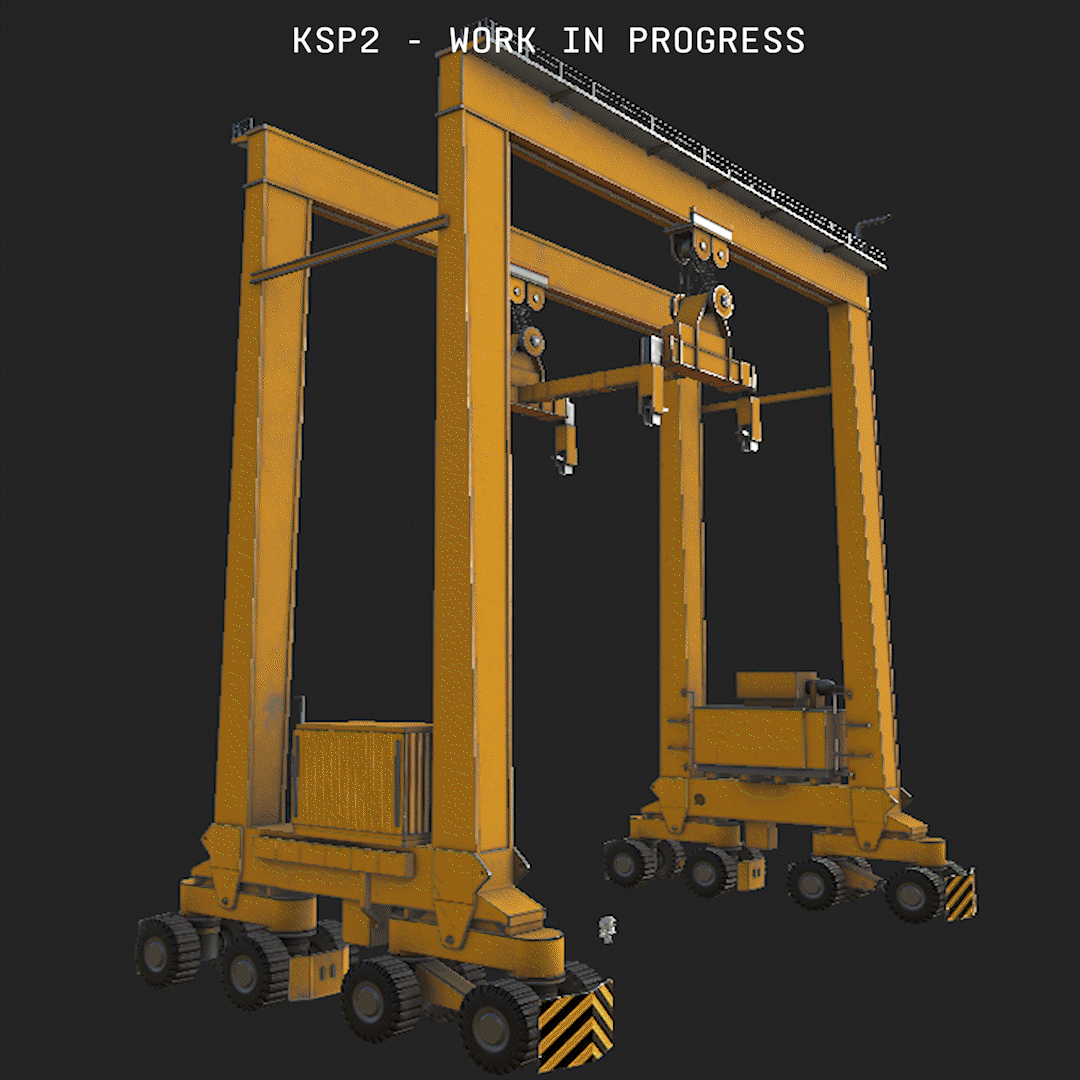


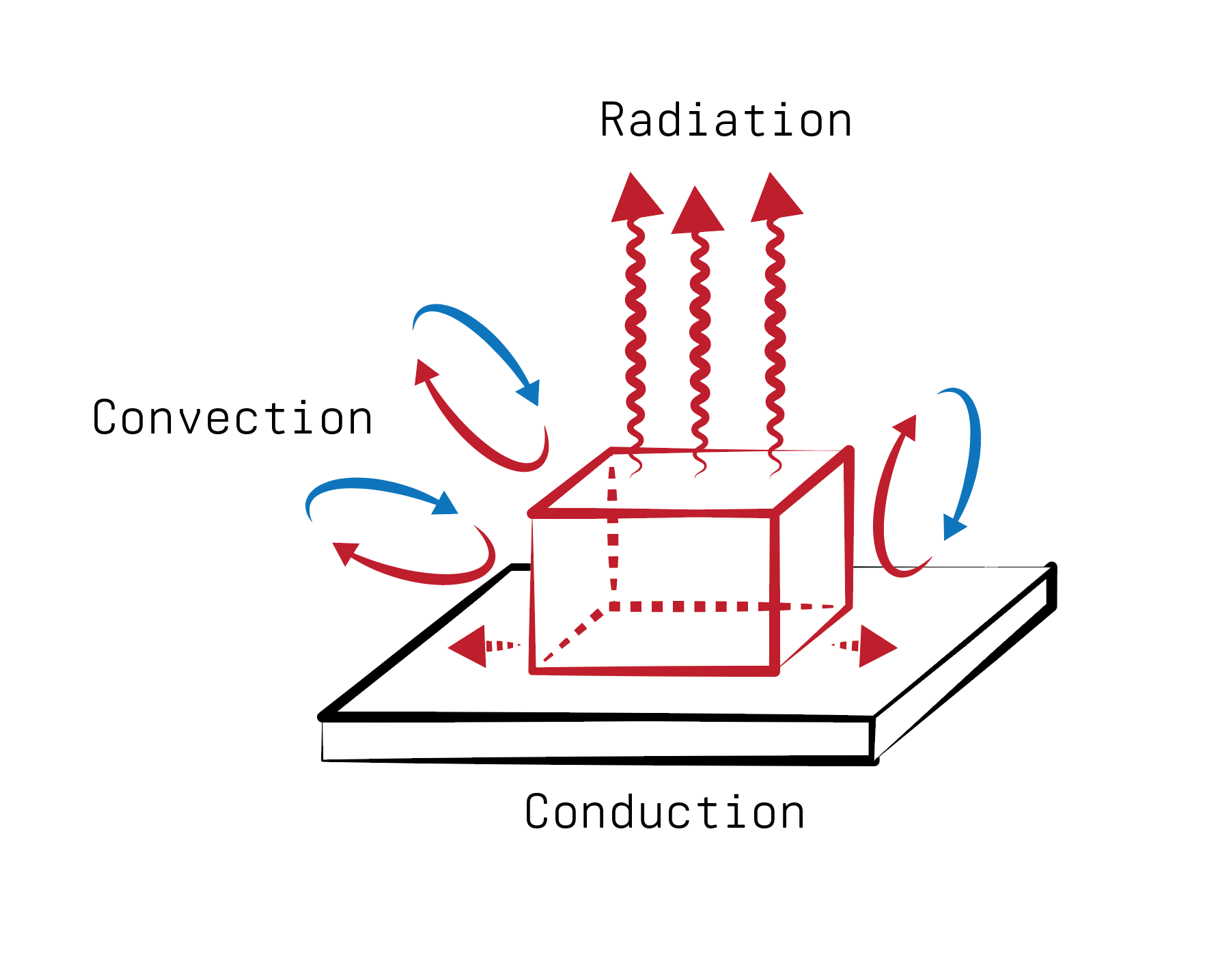 The three common processes that move heat around.
The three common processes that move heat around. An astronaut servicing a thermal control radiator on the International Space Station and a large KSP2 interstellar vessel with several radiators in its midsection.
An astronaut servicing a thermal control radiator on the International Space Station and a large KSP2 interstellar vessel with several radiators in its midsection. 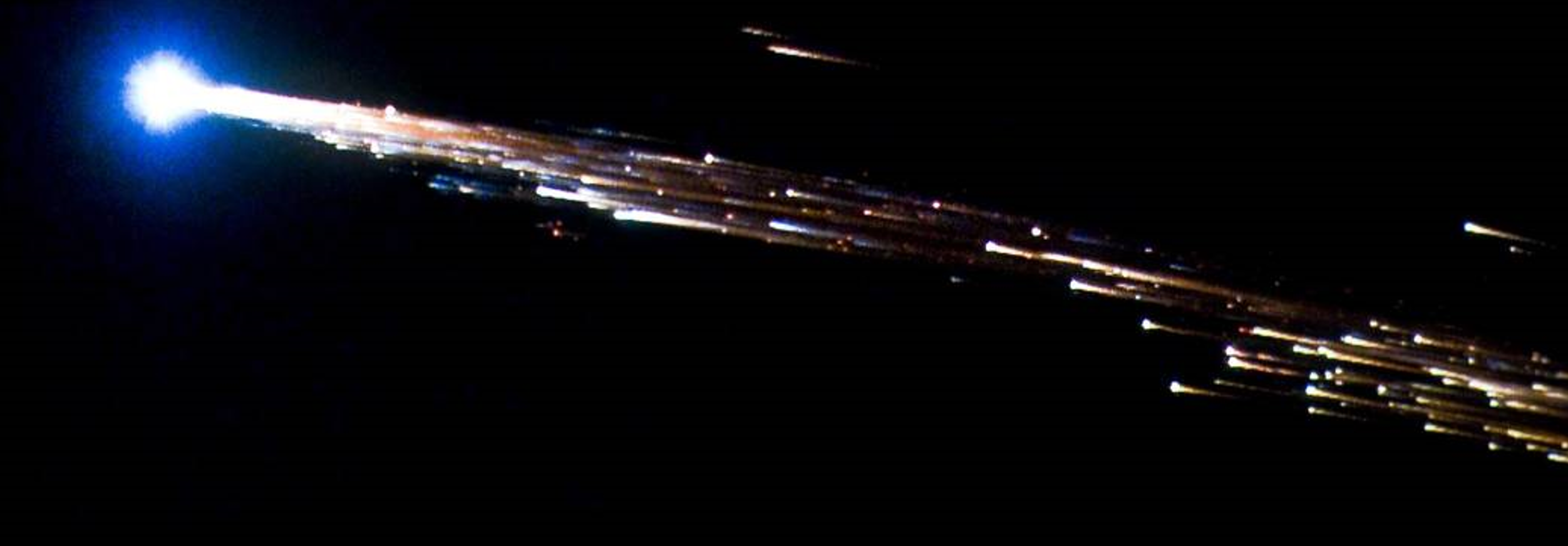 The ESA spacecraft Jules Verne burning up in reentry.
The ESA spacecraft Jules Verne burning up in reentry.  Reentry stories: you should really add a heat shield.
Reentry stories: you should really add a heat shield.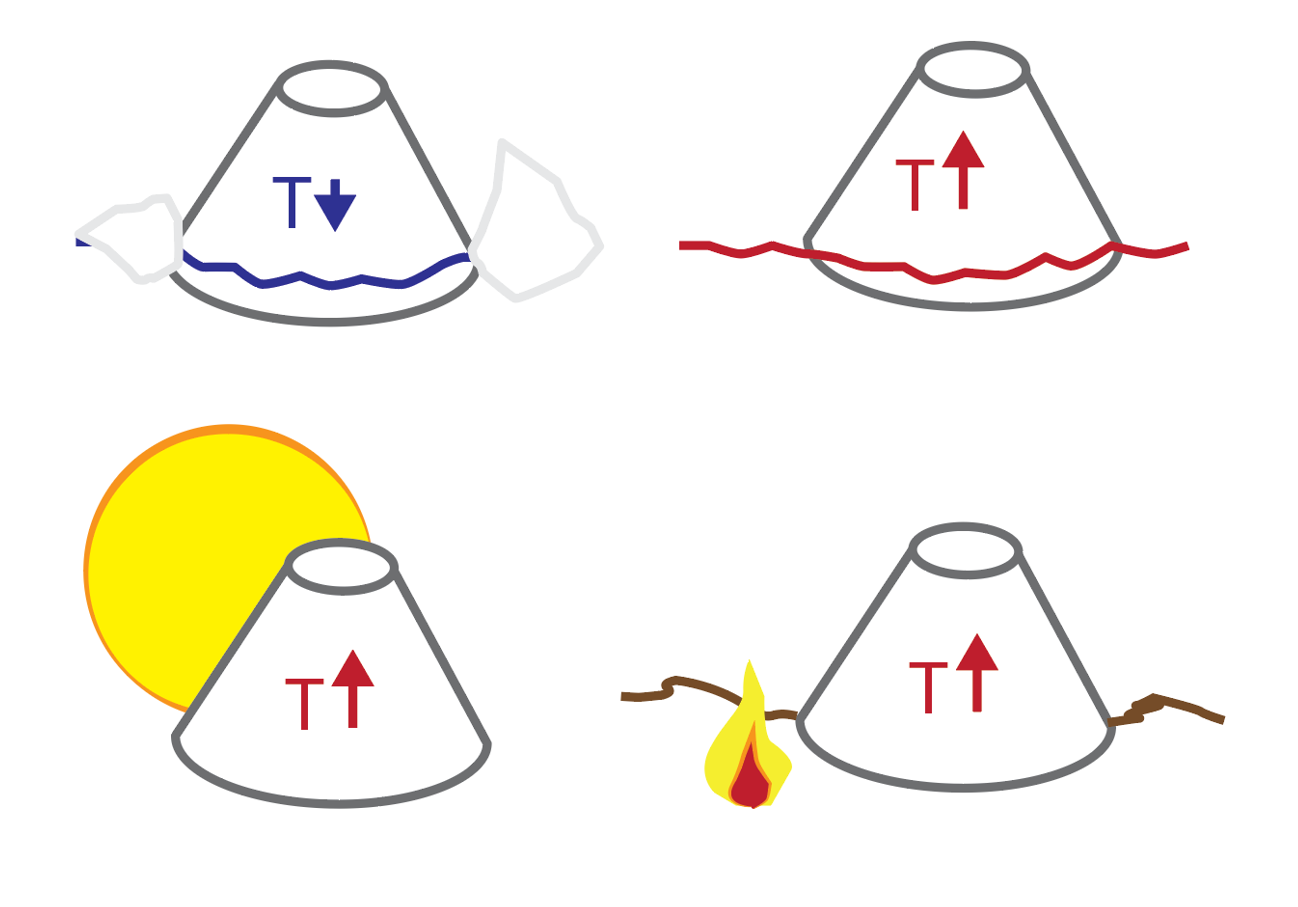 Environmental stories. I'm a designer, not an artist!
Environmental stories. I'm a designer, not an artist!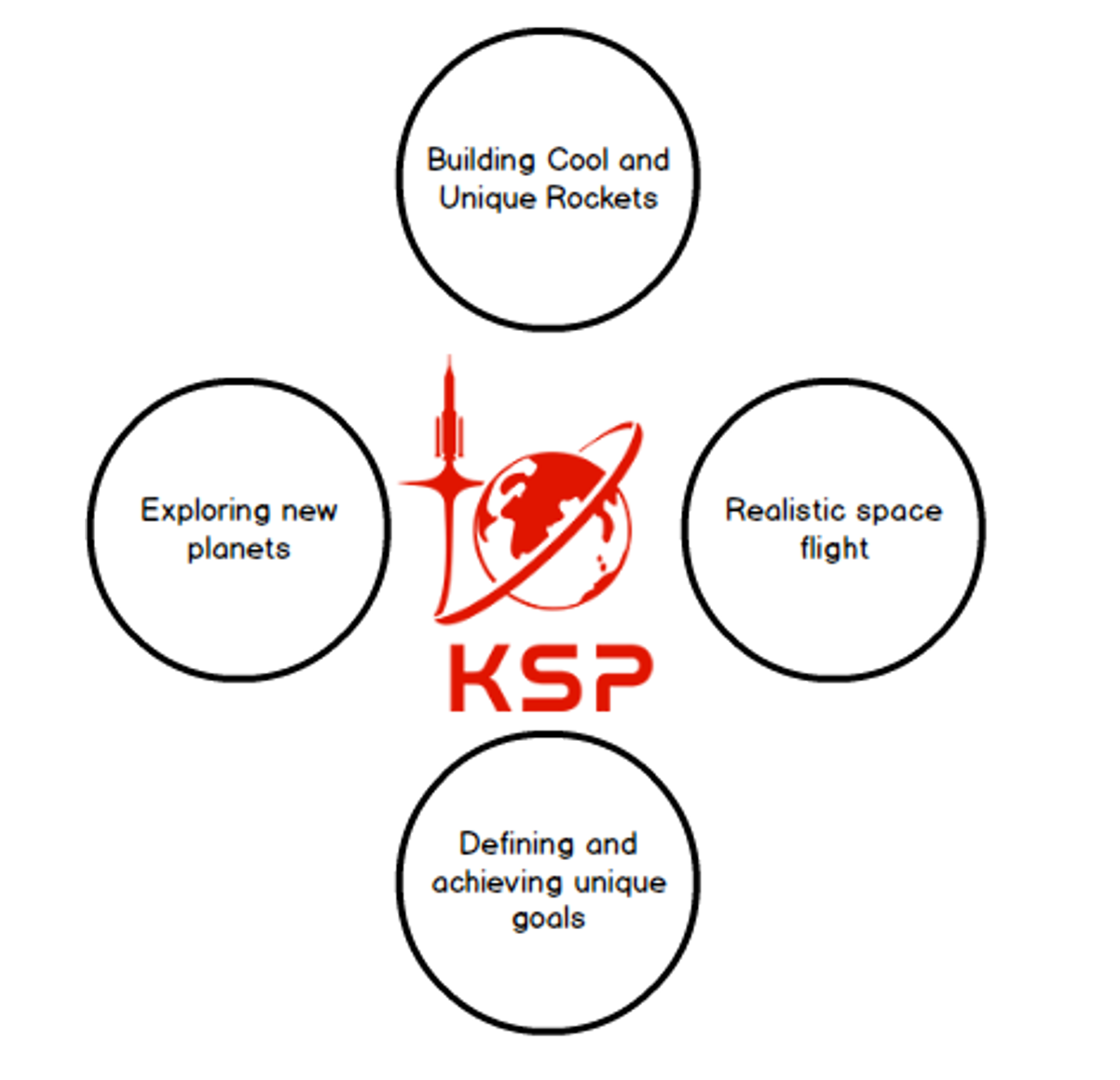
 This cow is exchanging energy with its local environment!
This cow is exchanging energy with its local environment!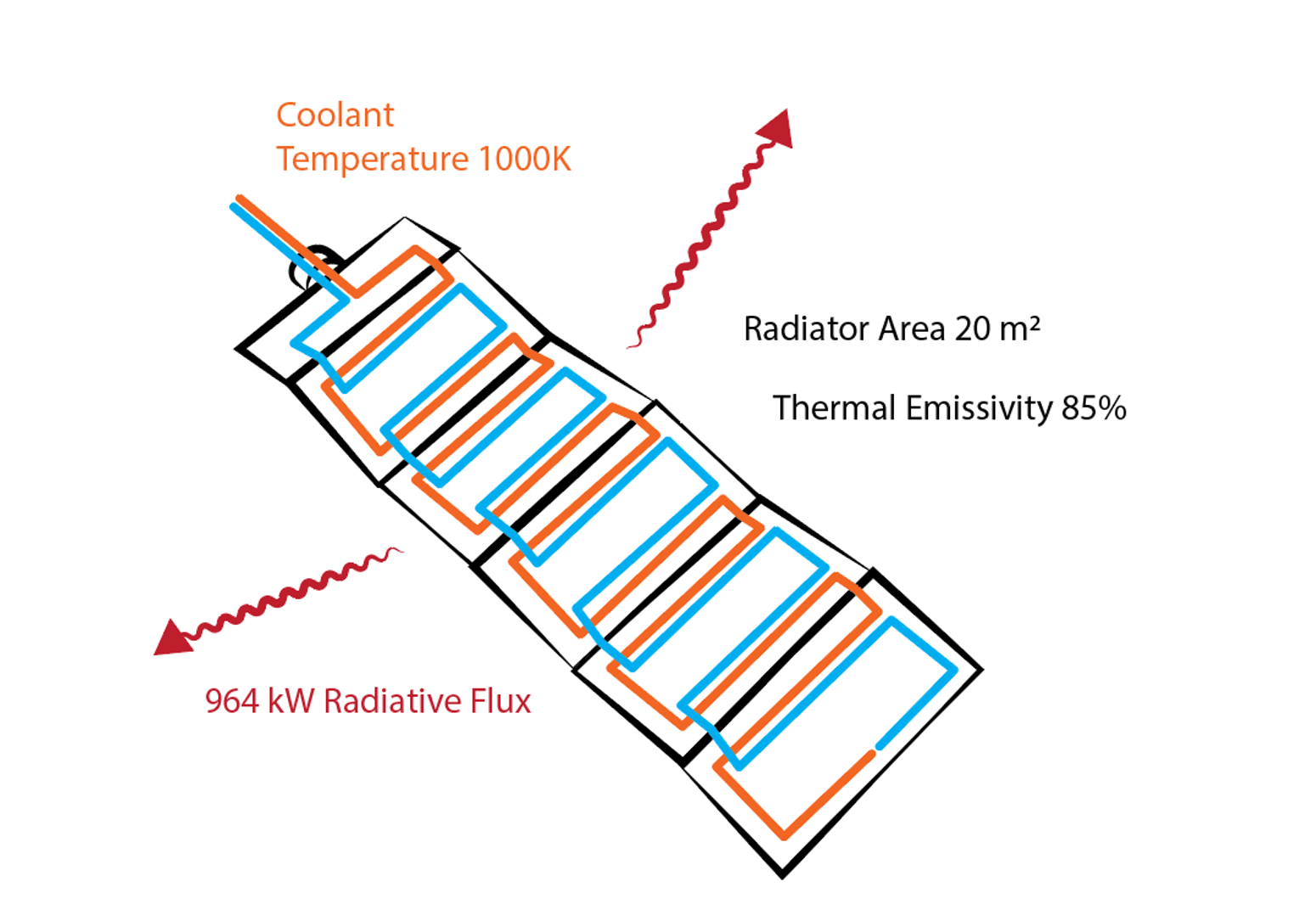 A radiator with a few of the parameters that might be needed to physically simulate it.
A radiator with a few of the parameters that might be needed to physically simulate it.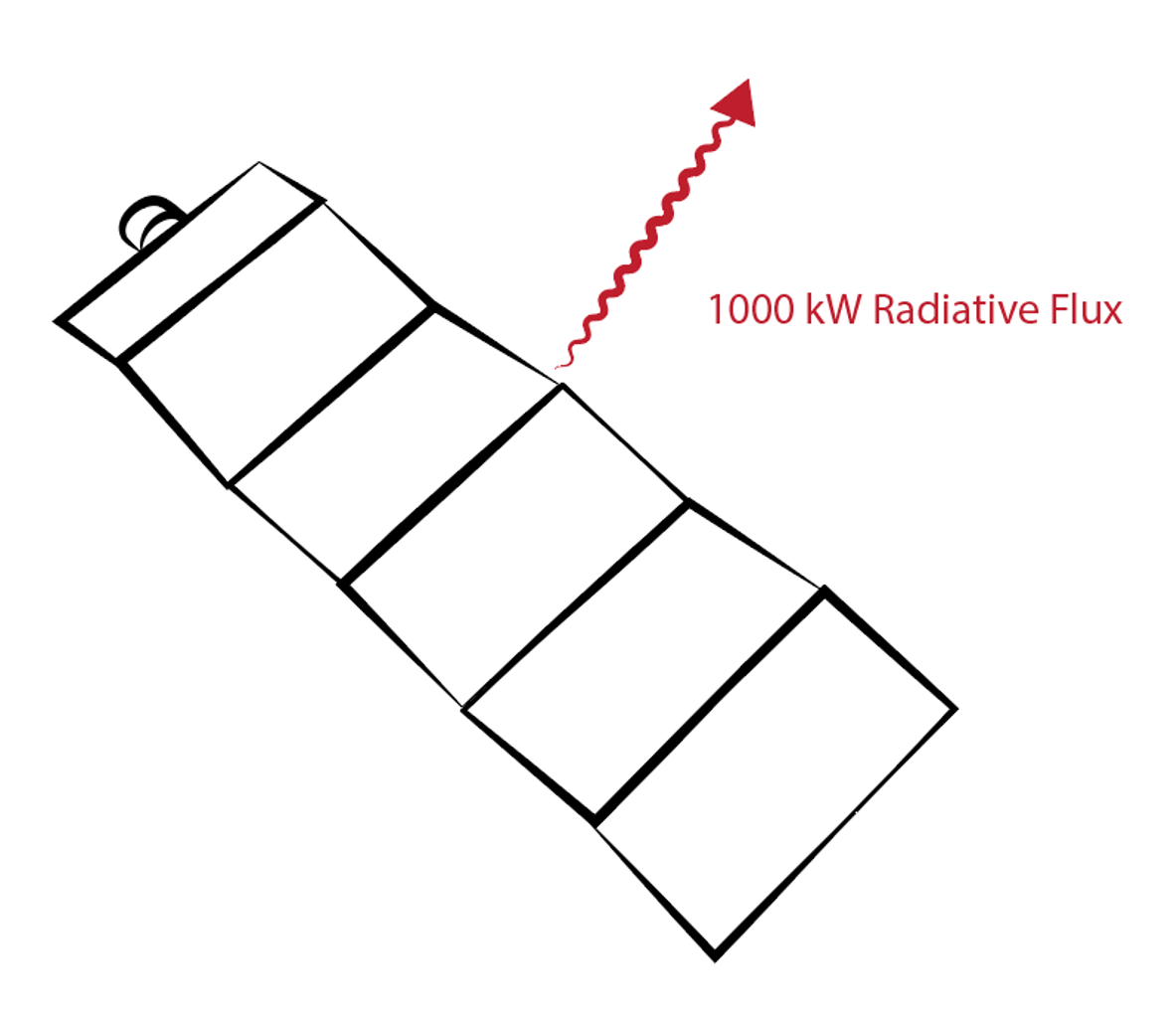 A radiator with a single deterministic flux value, informed by physical relationships.
A radiator with a single deterministic flux value, informed by physical relationships. The KSP1 simulation-focused thermal model, as shown by the in-game KSPedia.
The KSP1 simulation-focused thermal model, as shown by the in-game KSPedia.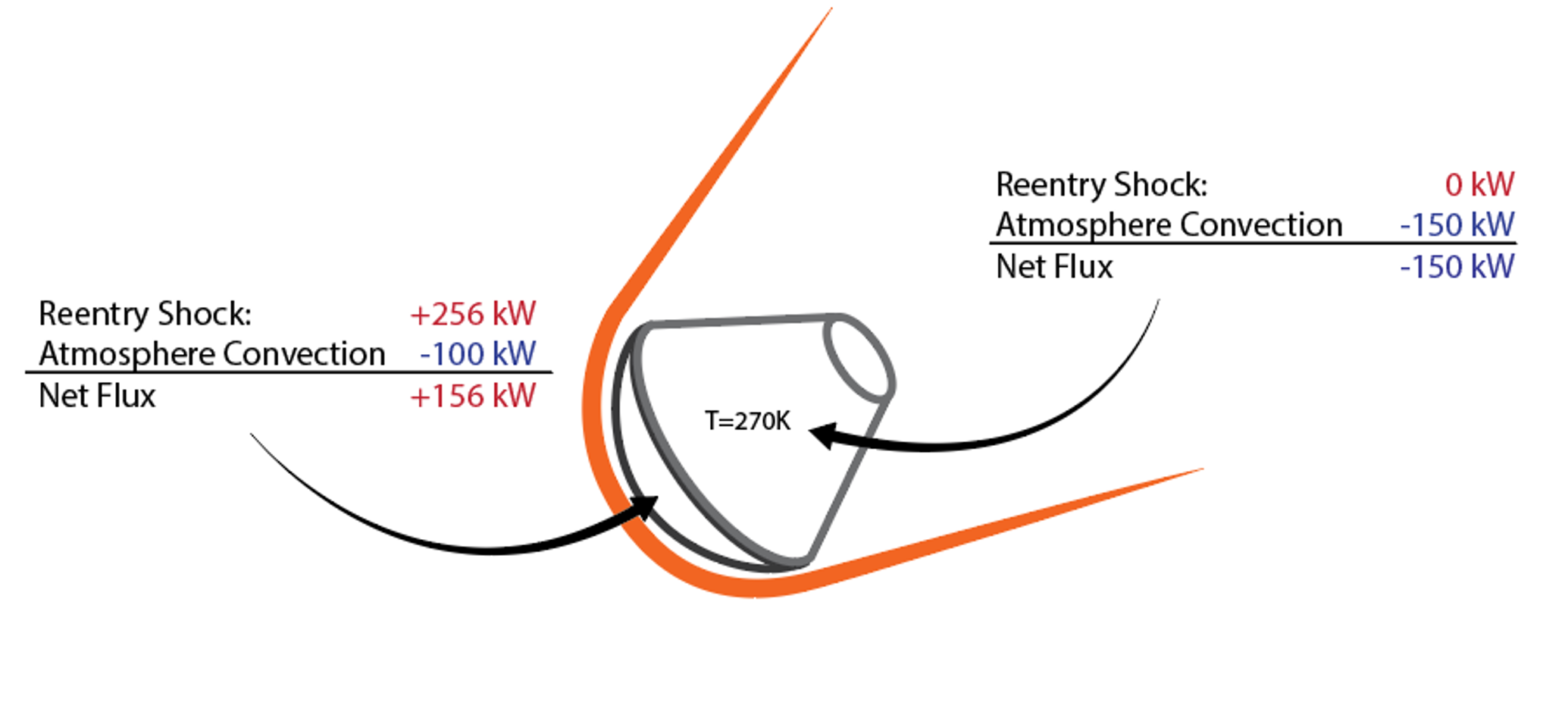 Thermal system in a reentry context.
Thermal system in a reentry context.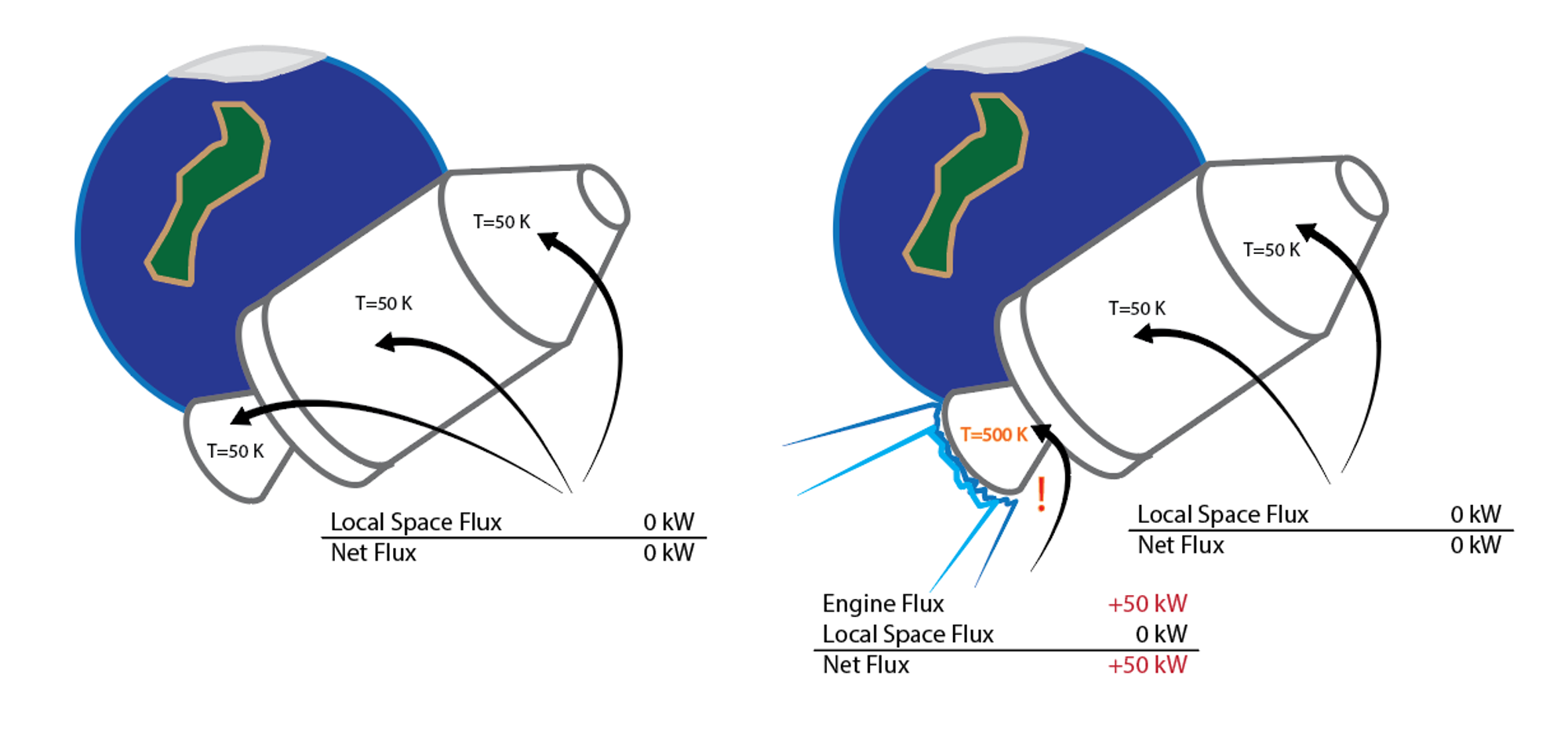 Thermal system in an orbital context, with a part.
Thermal system in an orbital context, with a part. A more complex ship makes for a more complex example.
A more complex ship makes for a more complex example.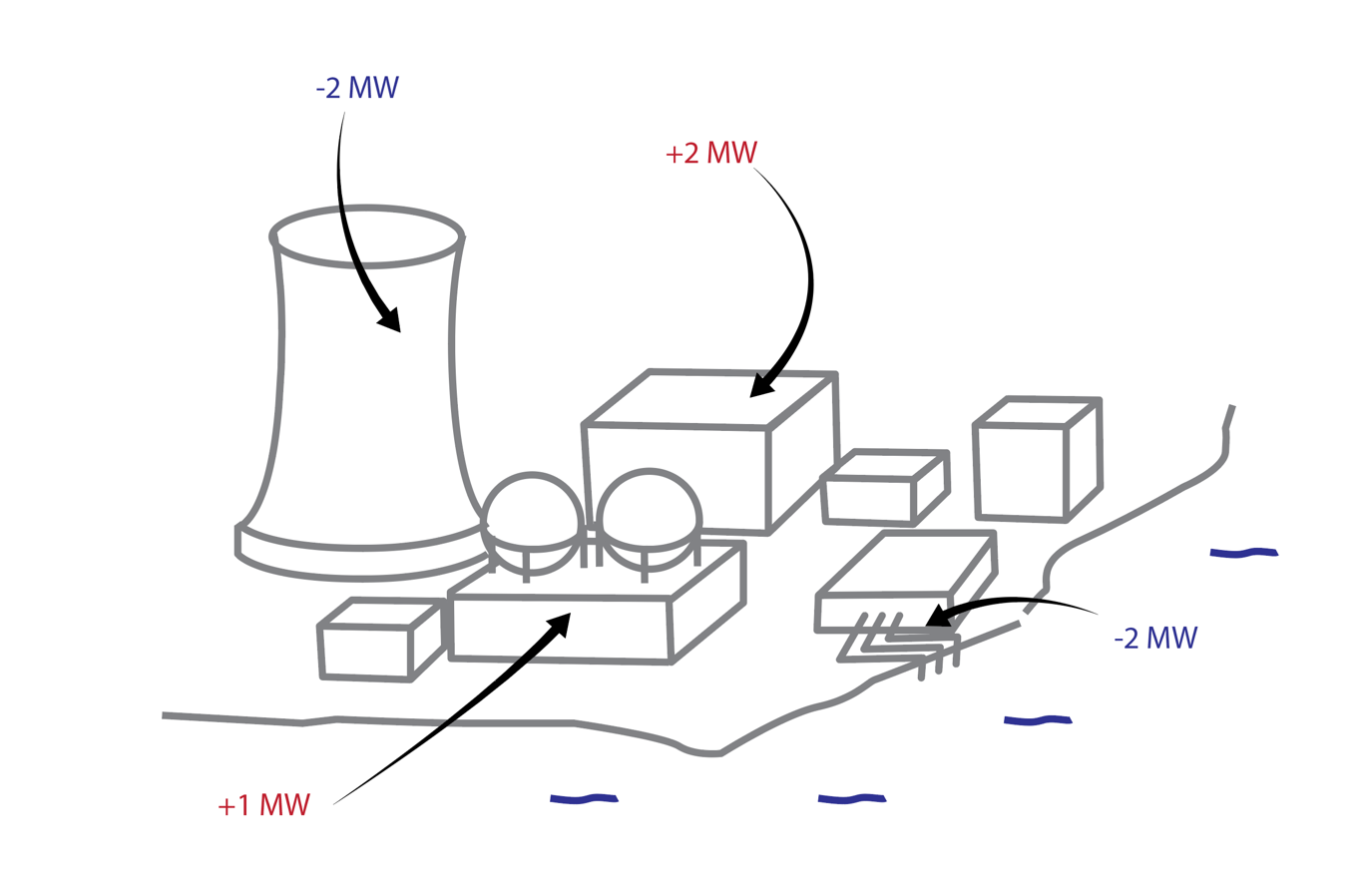 A zoomed out example, with a colony!
A zoomed out example, with a colony!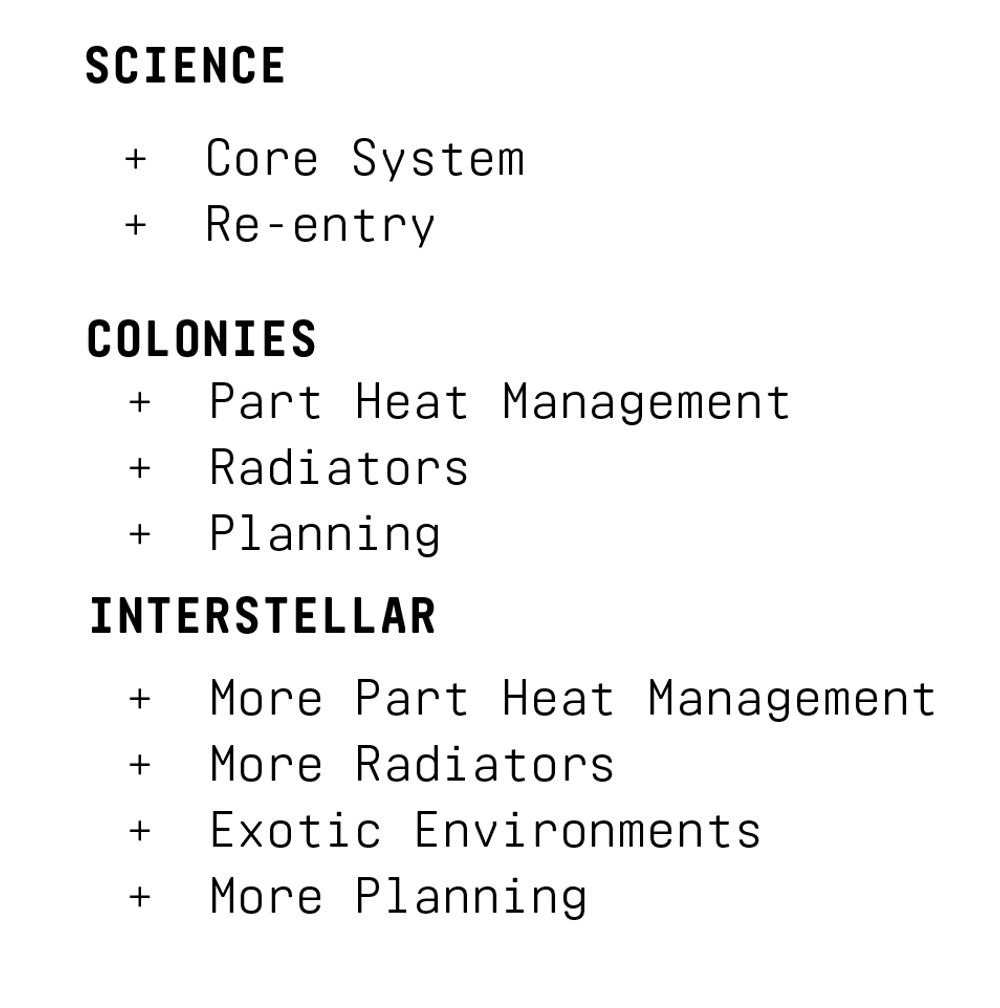
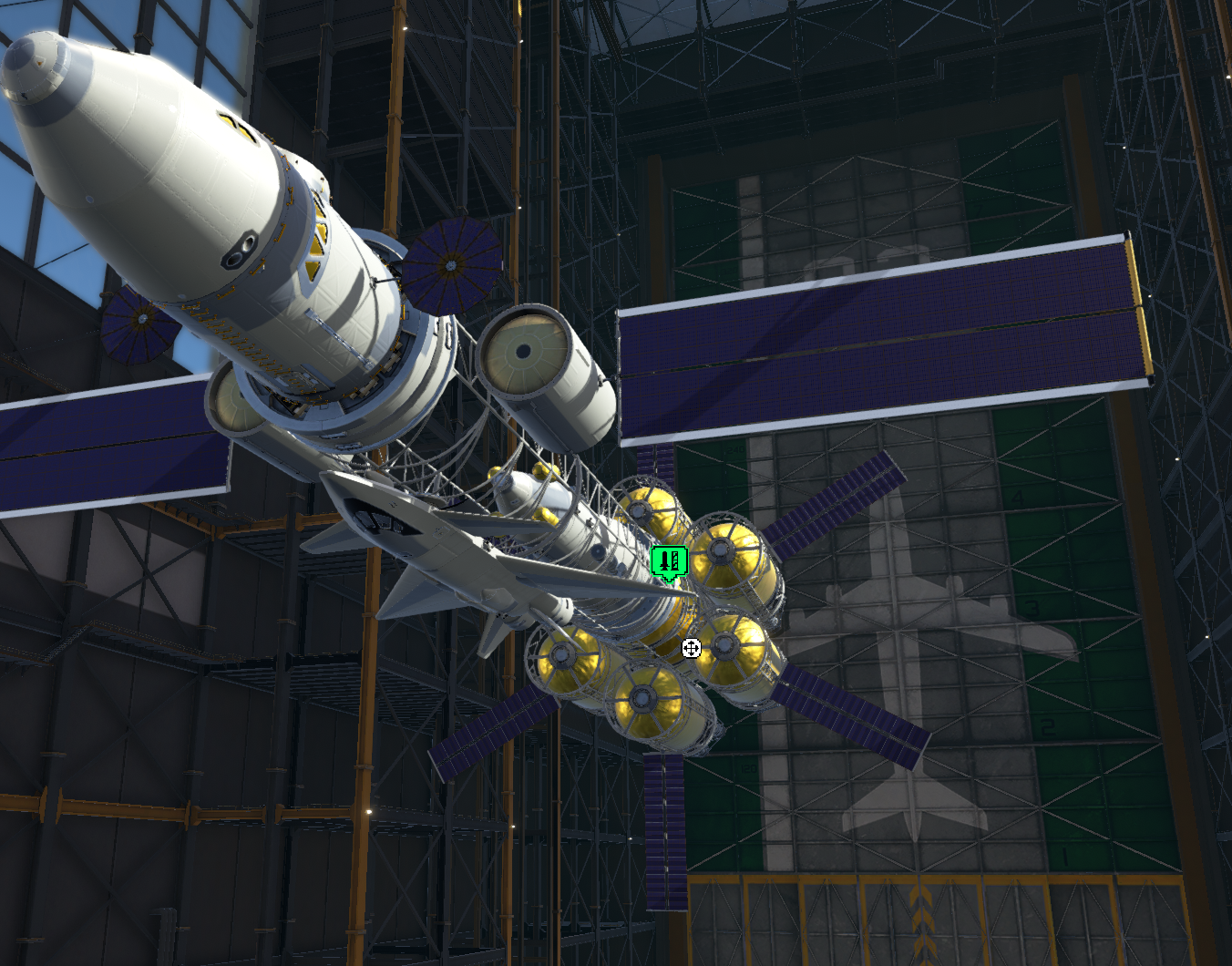
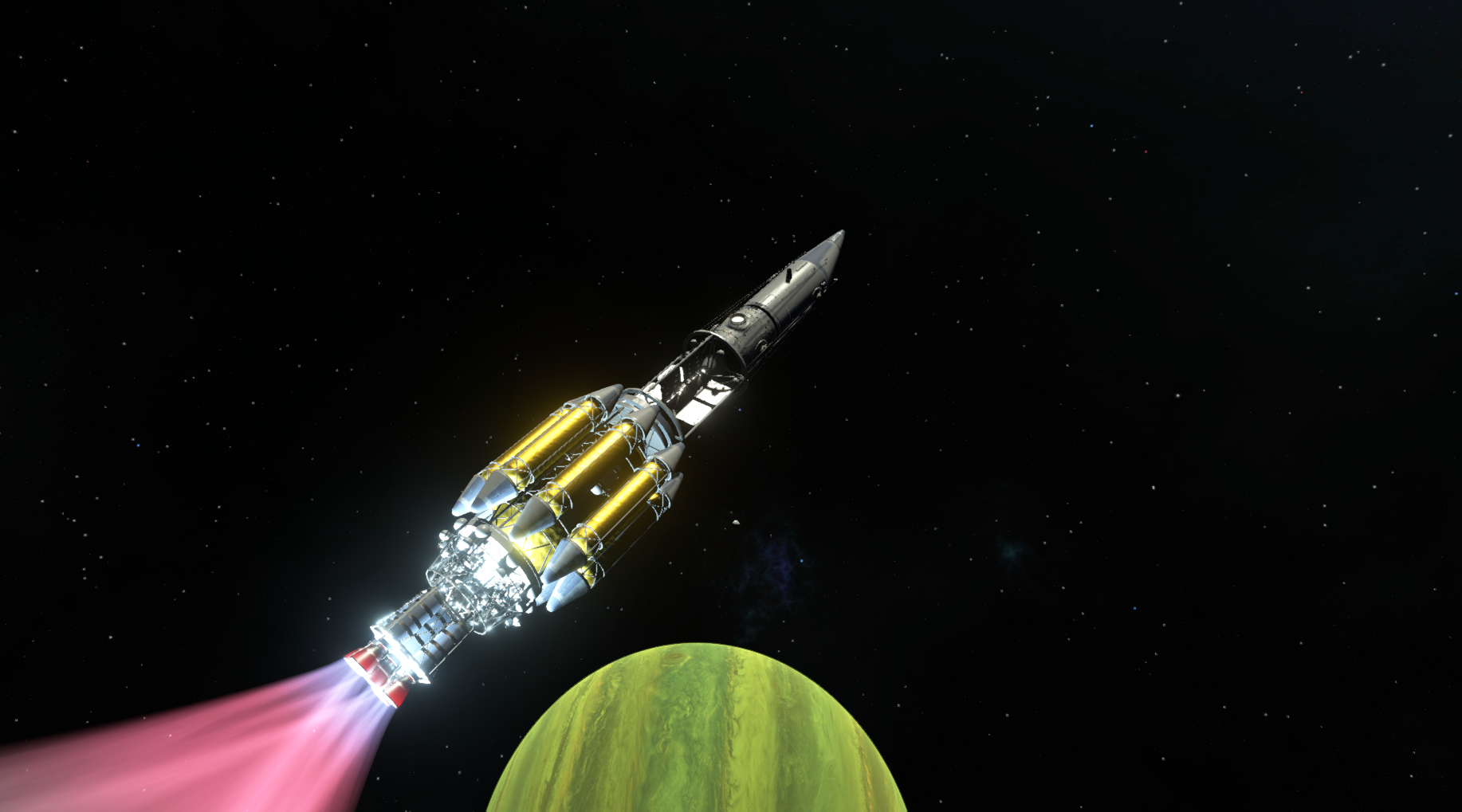
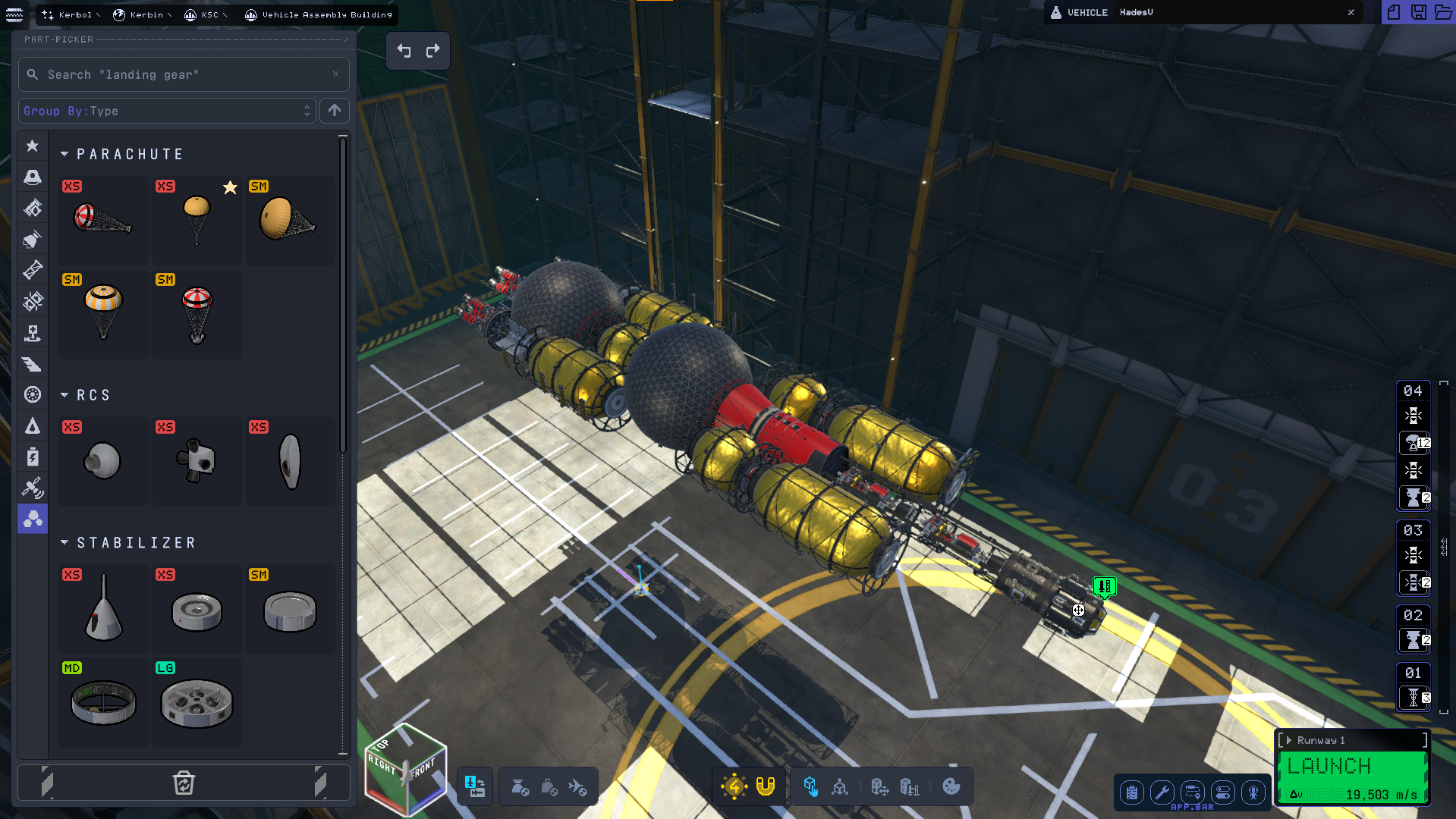
 Concept art of the new Kerbal suits.
Concept art of the new Kerbal suits. Early idea sketches of the Early Access key art.
Early idea sketches of the Early Access key art.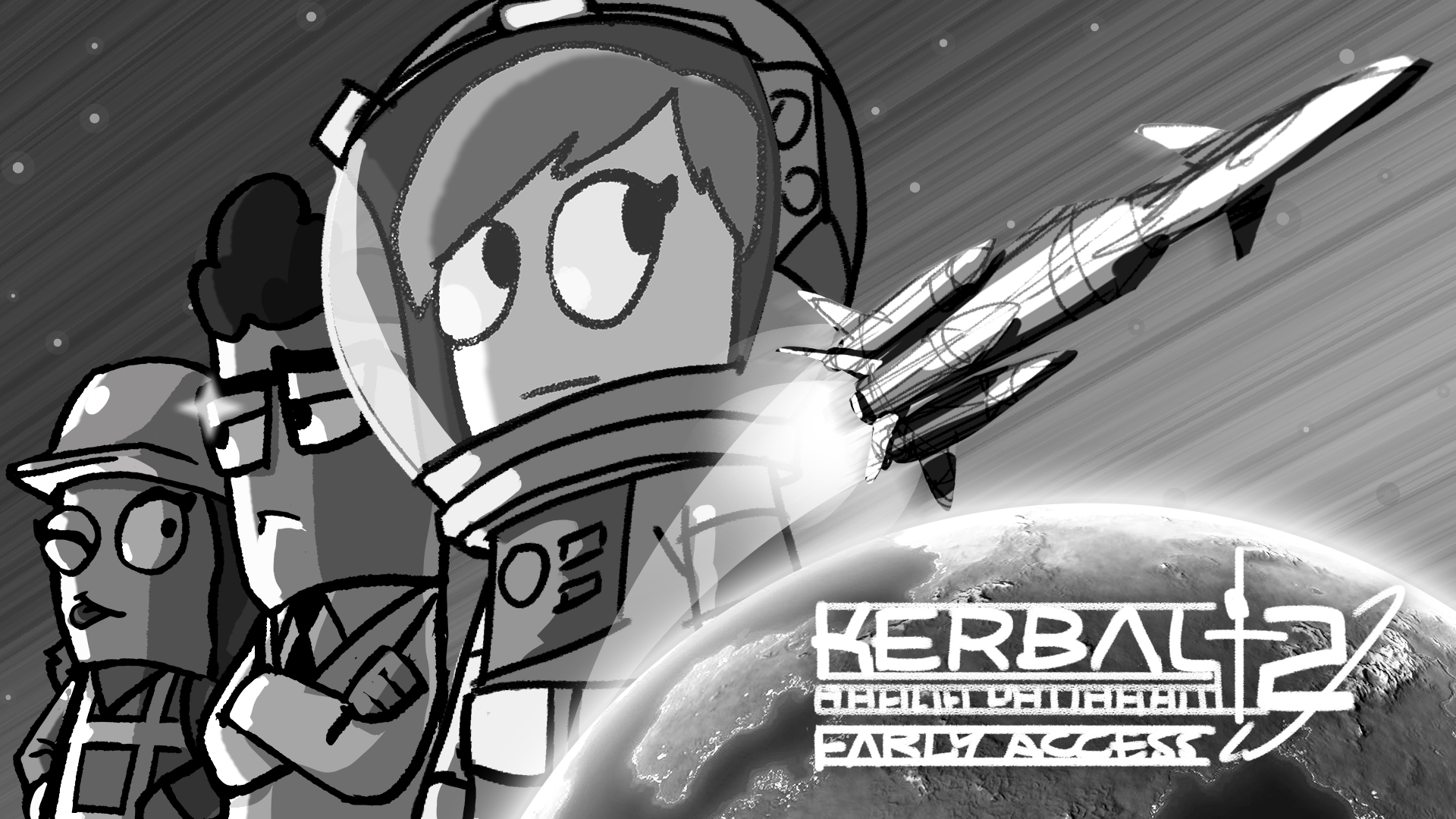 The sketch that would become the Early Access key art.
The sketch that would become the Early Access key art.